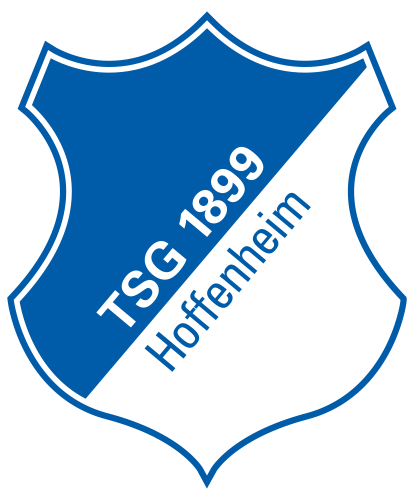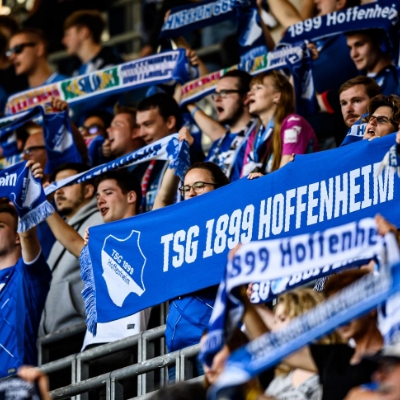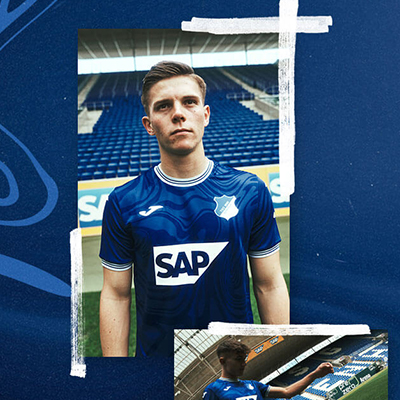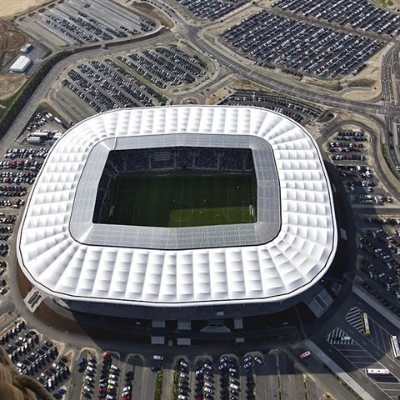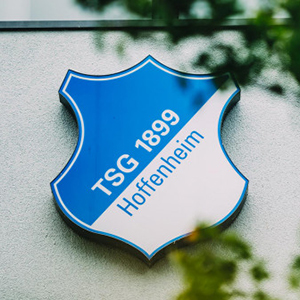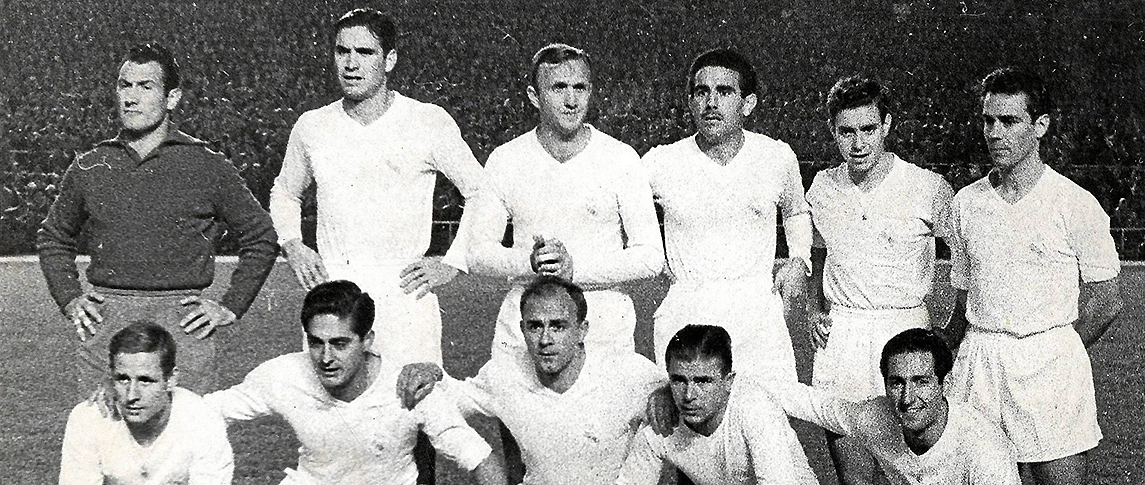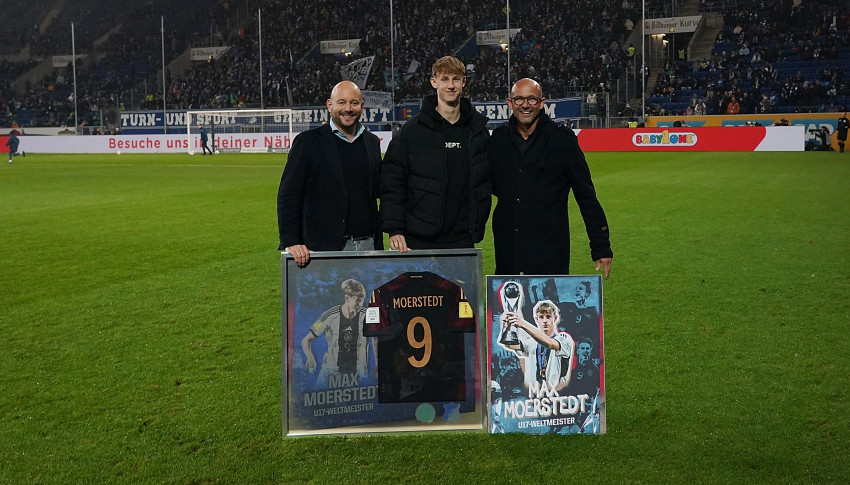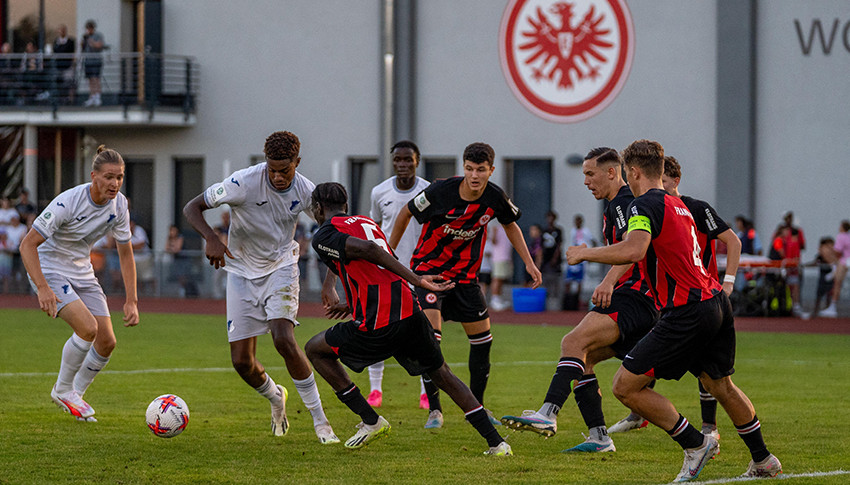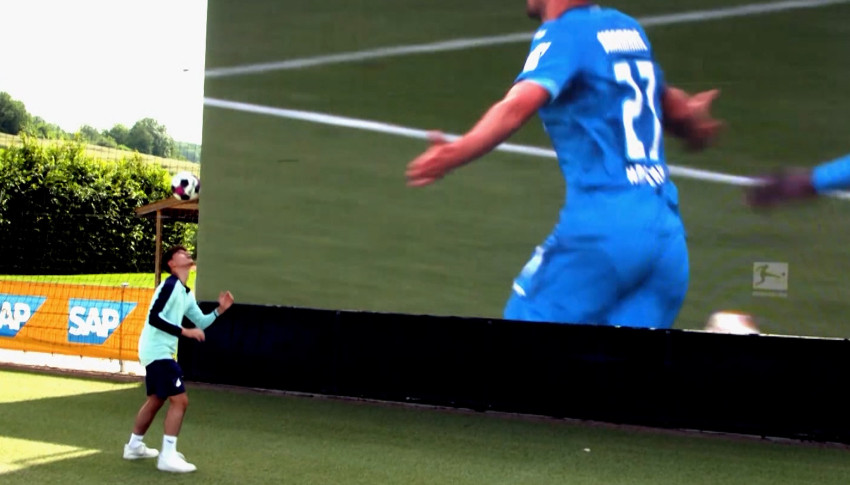Real Madrid: A club of superlatives & superstars
Where do you start? And once you've started, where do you stop? What more is there to say about Real Madrid? What can possibly be written about the world's most successful football club that isn't already common knowledge? There have been numerous titles and a long history of illustrious players, all the way from the 'White Ballet' era of Alfredo Di Stéfano and Ferenc Puskás to the 'Galacticos' of Zinédine Zidane and Cristiano Ronaldo. The club's glorious history is inextricably linked with Santiago Bernabéu, who 70 years ago laid the foundations for the club to become the behemoth we know today.
Los Merengues endured a 32-year wait between lifting the European Champions Cup in 1966 and winning the Champions League, as the competition is now known, in 1998. Thirty-two years is a long time for the world's most successful club to go without winning the biggest European trophy. Unimaginable. Of course, there were UEFA Cup triumphs in 1985 and 1986, plus 16 league titles and seven cup victories, but the philosophy of the capital club is to only be satisfied with the absolute maximum.
The fact that Real Madrid developed into the biggest club in Spain and, ultimately, worldwide is down to the efforts one of man, Santiago Bernabéu, whose memory is still kept alive a full 41 years after his death by a stadium named in his honour. The former Real Madrid player (1912-17) and ex-club president (1943-78) realised earlier than anyone else the appeal football had to people and how it could distract them from everyday life. When he took over the club during the Second World War, Los Blancos had only won two Spanish titles since the competition was introduced back in 1928. The dominant force in the city was Atlético. No state subsidies were granted to rebuild the club, which had suffered enormous personnel and infrastructural damages during the war. Santiago Bernabéu took care of it all.
By the time the first-ever European Champions Cup was held in 1955, Bernabéu had splashed the cash to assemble a high-profile squad. Back then, this approach caused a huge stir because the standard procedure for even the biggest clubs was to recruit players from their local areas. Bernabéu, however, was not afraid to spend big and signed the best players around – whether they were Argentinians, Hungarians or Brazilians. His team of superstars unsurprisingly won the first edition (and the subsequent four) of the European Cup. Bernabéu even signed the best player from their opponents in the first European Champions Cup final, French champions Stade Reims, whose striker Raymond Kopa was added to his star-studded emsemble. The image of a voracious and insatiable club unafraid to wield their cheque book was cemented forever. Over an eight-year period, between February 1957 and March 1965, Real went 121 home games in the Spanish top flight without defeat. It remains a world record.
Once the "White Ballet" had performed its last dance, the club went through a challenging first upheaval − its first of the modern era. With its team of exclusively Spanish players, Real Madrid were nicknamed "El Madrid Yé-yé" in the mid-1960s in reference to the Beatles song "She Loves You". In those days, Yé-yé was a term for young and carefree people who pursued a similar lifestyle to the musicians from Liverpool. In 1966, Madrid lifted the European Cup for the sixth time, but that triumph marked the end of their dominance. On the international stage, at least. But their lowlights were not limited to continental competition. The capital club finished in eighth and ninth position − their worst-ever placements − in the Primera División in two seasons in the 1970s, a decade during which titles were few and far between. It was precisely in this period that Günter Netzer (1973-76) and Paul Breitner (1974-77) became the first Germans to grace the Bernabéu. They were the trailblazers who paved the way for many others − the likes of Bernd Schuster, Ulli Stielike, Bodo Illgner, Christoph Metzelder, Sami Khedira, Mesut Özil and Toni Kroos − to follow in their footsteps.
It was not until 1998 when Real next triumphed at continental level, the Serbian forward Predrag Mijatović scoring in the Champions League final to secure a 1-0 win over Juventus. Finally, two decades on from Bernabéu's death, Los Blancos were finally back where they felt they belonged. It marked the start of a second glorious period that saw the club win a total of seven continental titles – including each of the last three. But, with all due respect for their youth work, it has been a success largely attributable to their lavish transfer policy. The most prominent signing would be Gareth Bale, who became the world's most expensive player when president Florentino Perez bought him for €101 million. The Welshman scored a brace against Liverpool in the most recent UCL triumph, but has only played 56 percent of the current campaign. Not bad being able to afford such a strong player for the bench. Eight of the 20 clubs currently in the Spanish top flight have a squad whose combined value is less than Bale's transfer fee back in 2013, although that money has easily been recouped through merchandise and kit sales to the global fanbase. The Bale era has seen Real claim four Club World Cups too. Astonishingly, it had never won the competition before claiming four of the last five titles for the trophy cabinet.
At the beginning of March this year, however, Real reached a low point. Having suffered three defeats in a matter of days − two of which came against arch-rivals Barcelona in the league and cup, with the other a stunning 4-1 home loss to Ajax that ended the club's three-year reign as European Champions − Real Madrid made their second coaching change of the season and re-appointed Zinédine Zidane. The Frenchman, who had only resigned from the position last summer, won a number of major titles with the club both as a player and a coach. It is pretty much a given that the club will be spending big this summer. Another painful season like this one can't be allowed to happen again.
Club data
FULL NAME
Real Madrid CF (Club de Fútbol)
COUNTRY
Spain
CITY
Madrid [3,223,000 inhabitants]
DATE FOUNDED
6 March 1902
HONOURS
33 x La Liga: 1932, 1933, 1954, 1955, 1957, 1958, 1961, 1962, 1963, 1964, 1965, 1967, 1968, 1969, 1972, 1975, 1976, 1978, 1979, 1980, 1986, 1987, 1988, 1989, 1990, 1995, 1997, 2001, 2003, 2007, 2008, 2012, 2017.
19 x Copa del Rey: 1905, 1906, 1907, 1908, 1917, 1934, 1936, 1946, 1947, 1962, 1970, 1974, 1975, 1980, 1982, 1989, 1993, 2011, 2014.
10 x Spanish Super Cup: 1988, 1989, 1990, 1993, 1997, 2001, 2003, 2008, 2012, 2017.
13 x Champions League (European Cup): 1956, 1957, 1958, 1959, 1960, 1966, 1998, 2000, 2002, 2014, 2016, 2017, 2018.
2 x UEFA Cup: 1985, 1986.
4 x European Super Cup: 2002, 2014, 2016, 2017.
4 x Club World Cup: 2014, 2016, 2017, 2018.
COLOURS
White, blue
STADIUM
Estadio Santiago Bernabéu [81,044]



